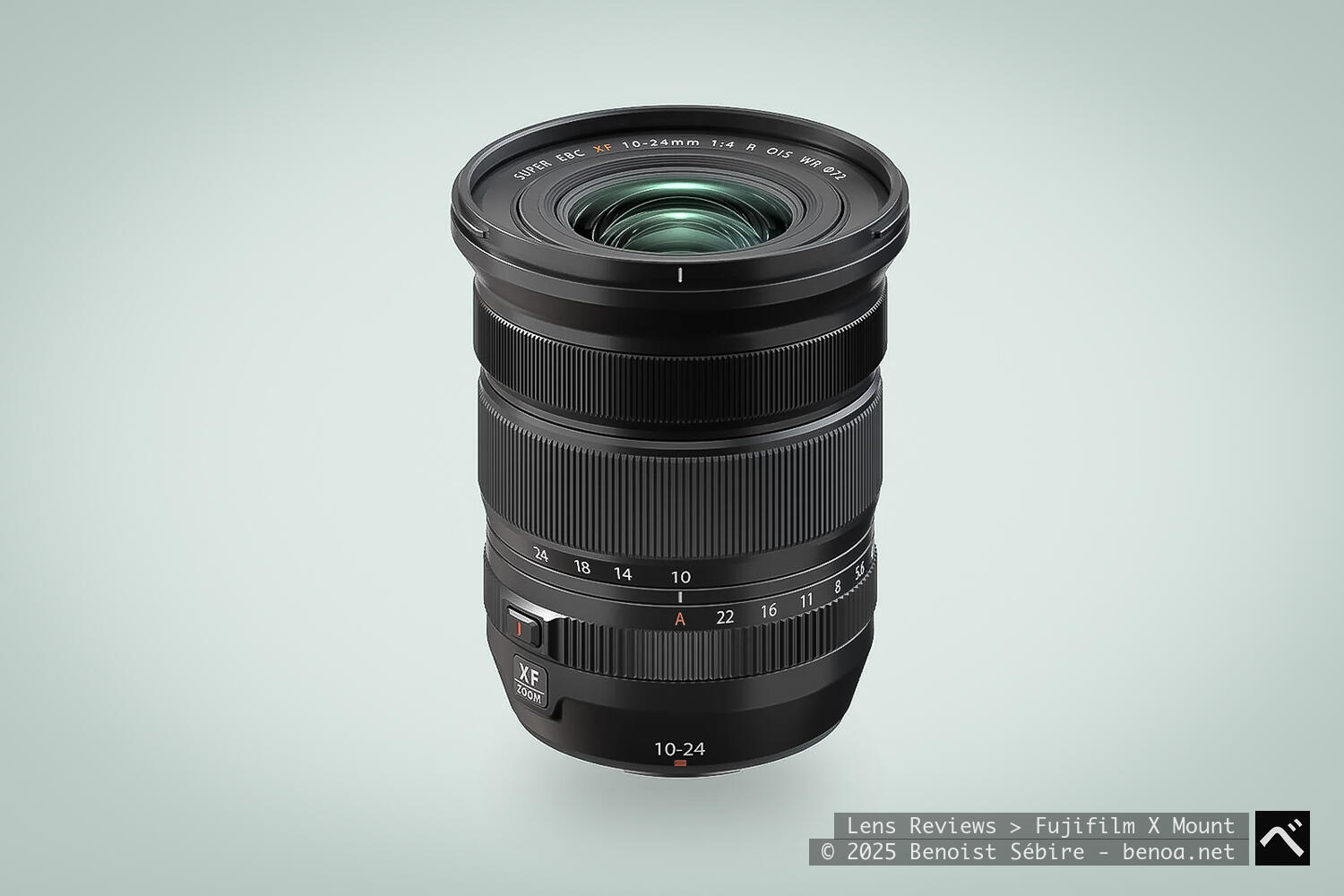Fujinon XF 10-24mm Review

Released in 2014, the Fujinon XF 10-24mm f/4 R OIS was Fujifilm’s first ultra-wide zoom lens for the X-mount system. Offering a 15-36mm full-frame equivalent focal range, this lens became a go-to choice for landscape, architecture, and interior photography. It combined excellent optical quality, a lightweight design, and built-in image stabilisation (OIS), making it a popular option for both photographers and videographers. However, it lacked weather sealing, which was later addressed in the 2021 WR version.
Build and Design
The XF 10-24mm f/4 R OIS features a high-quality metal and plastic construction, typical of Fujifilm’s premium XF lenses. Despite being an ultra-wide zoom, it is relatively compact and lightweight at 410g, making it an ideal travel companion. The internal zoom and focusing design prevents the lens from extending when zooming, which helps maintain balance when used on a gimbal.
A standout feature is the manual aperture ring, which allows quick and intuitive adjustments. However, it lacks marked aperture values, meaning changes must be monitored in the camera’s display. Additionally, unlike its successor, this version does not have an aperture lock, which makes accidental adjustments possible.
The 72mm filter thread allows for easy use of ND and polarising filters, a valuable feature for landscape and long-exposure photography. However, the lens is not weather-sealed, making it more vulnerable to dust and moisture when shooting in harsh environments.
Optical Performance
The XF 10-24mm f/4 R OIS delivers sharp and detailed images across its zoom range, with particularly strong central sharpness. However, corner sharpness can be slightly soft at f/4, improving when stopped down to f/5.6 or f/8.
The lens design includes four aspherical and four extra-low dispersion (ED) elements, which help control chromatic aberrations and distortion. While barrel distortion is noticeable at 10mm, Fujifilm’s in-camera corrections effectively compensate for it in JPEGs, and RAW corrections are easily applied in post-processing.
Despite its constant f/4 aperture, background blur (bokeh) is not a major strength of this lens due to its wide-angle nature. However, at 24mm and close focusing distances, subject separation is possible.
Autofocus Performance
Featuring a stepping motor (STM), autofocus is fast, quiet, and accurate, making it highly reliable for both photography and video. Focus breathing is minimal, which is useful for cinematic video work.
The minimum focusing distance of 24cm allows for creative wide-angle close-ups, making it a great lens for exaggerated perspectives in landscapes and architecture photography.
Image Stabilisation
The Optical Image Stabilisation (OIS) system provides up to three stops of stabilisation, helping to reduce camera shake in low-light conditions. This makes handheld shooting more viable, particularly at 24mm, where motion blur is more noticeable. However, Fujifilm later improved OIS in the WR version, offering better performance when paired with IBIS-equipped cameras.
Handling and Versatility
Weighing just 410g, the XF 10-24mm f/4 R OIS is an exceptionally portable ultra-wide lens, perfect for travel photography. The 10-24mm zoom range makes it incredibly versatile, covering expansive landscapes, tight interior shots, and dynamic street photography.
With its internal zoom mechanism, the lens maintains a consistent balance, making it ideal for gimbal use in video applications. However, lack of weather sealing means caution is needed when shooting in challenging environments.
My main issue with Fuji lenses though is how they feel in the hand. The paint or coating they use has a slightly greasy or slippery texture, which I find unpleasant compared to for instance Canon.
Conclusion
The Fujinon XF 10-24mm f/4 R OIS remains an excellent choice for wide-angle photography, offering a versatile zoom range, sharp optics, and effective image stabilisation. While it lacks weather sealing and has minor corner softness at f/4, it remains a lightweight and high-performing ultra-wide zoom for Fujifilm X-series users.
For those needing a compact, high-quality lens for landscapes, interiors, and video work, the XF 10-24mm f/4 R OIS is a strong contender. However, photographers working in harsher environments may prefer the WR version for its added durability and refinements.
Strengths
- Excellent sharpness across the frame
- Compact, well-balanced ultra-wide zoom
- Effective optical image stabilization
- Great contrast and Fujifilm color rendering
- Internal zoom and fast, quiet AF
- Solid construction with premium feel
Weaknesses
- No weather sealing (in this original version)
- Some vignetting and distortion at 10mm
- Bokeh is limited by aperture and focal length
- Aperture ring lacks hard stops at Auto and f/4
- Slightly dated compared to newer Fujinon designs
Samples
Here are the latest photos I captured through my Fujinon XF 10-24mm f/4 R OIS lens. These sample shots highlight the lens’s performance across different conditions, settings, and subjects. To view the complete collection of photos taken with this lens, follow the link.






